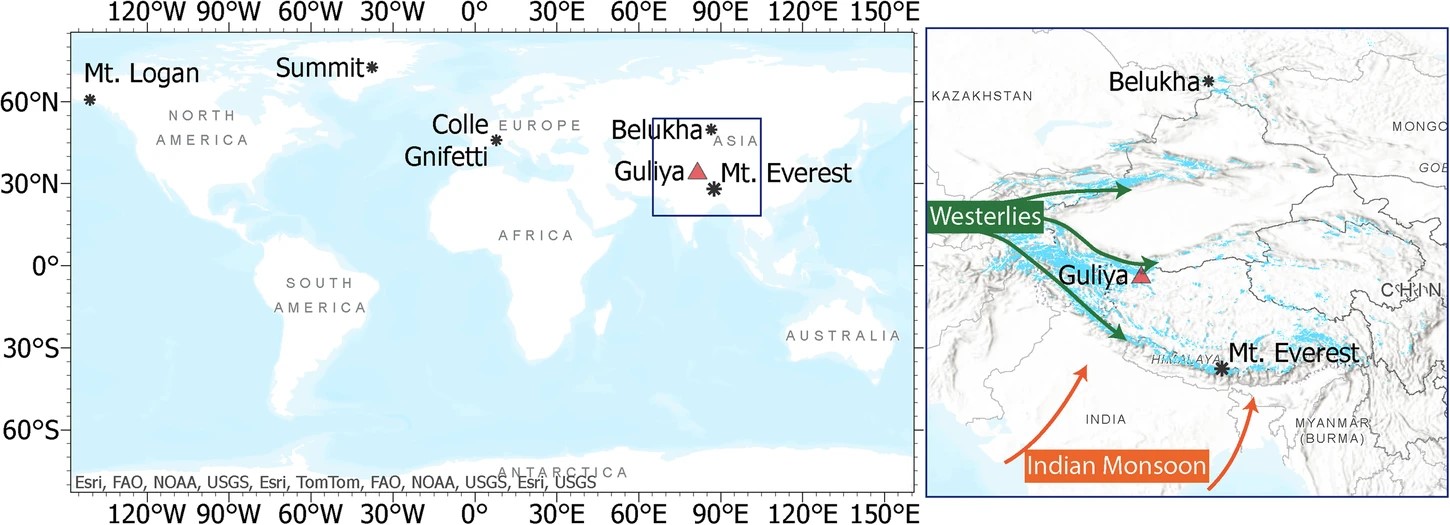Historic and Modern Lead Pollution Traced in Tibetan Glaciers

ORIGINALLY POSTED BY BYRD POLAR AND CLIMATE RESEARCH CENTER
In a significant environmental study led by researchers at The Ohio State University and collaborators from Texas A&M University, scientists have uncovered the historic and ongoing sources of lead pollution in the Guliya ice cap, located on the Tibetan Plateau. Their findings, spanning about 36,000 years ago to the present, shed new light on the anthropogenic impacts on one of the world's most pristine and vital ecological zones.

The Guliya ice cap, known for its remote and relatively untouched environment, is a crucial water source for millions. This study explores the ice cap's dusty ice cores to trace the origins of lead pollution, which began to feature anthropogenic sources around the mid-20th century prominently. Researchers noticed a significant change in the lead isotope signatures starting from 1949, corresponding with industrial activities involving the use of leaded gasoline in China.

Through isotopic analysis, researchers identified a shift from natural lead sources to those dominated by human activities, particularly from Chinese gasoline emissions, which became significant by the 2000s. By 2007, as leaded gasoline usage declined, other sources such as coal burning and lead-zinc ores became more prominent.
The historical context of lead pollution is traced back to as early as 7000 BC, with human civilizations using lead for various purposes. However, in the Industrial Revolution and the subsequent introduction of leaded gasoline in the 1920s, lead emissions surged dramatically. This study illustrates how Chinese industrial advancements have amplified anthropogenic lead dispersal into the environment, with lasting impacts on environmental health.
The research utilized advanced analytical methods, including a Bayesian mixing model, to sensitively and accurately quantify lead sources. This lead isotopic record is based on the analysis of 89 discrete ice core samples that were compared with potential source area dust samples and with known anthropogenic sources, offering a detailed look into the variations and origins of lead contaminants.
The implications of these findings are profound, emphasizing the need for global strategies to manage and mitigate lead pollution. This is especially critical for the Tibetan Plateau, which is a crucial environmental barometer and a vital water source for large populations.
The study was published in Communications Earth & Environment. Lead author is former Byrd Center Researcher Senior Associate Roxana Sierra-Hernández. Co- authors included Franco Marcantonio from the Department of Geology and Geophysics at Texas A&M University and from Ohio State’s School of Earth Sciences, Associate Professor Elizabeth Griffith and Distinguished University Professor Lonnie Thompson, a senior research scientist at the Byrd Center.
This research highlights the global nature of environmental pollution and the necessity for continued research and policy-making to address these persistent and pervasive environmental challenges. Understanding the historical depth and present-day consequences of such pollution will be vital to protecting such invaluable natural resources.
Learn more by visiting Communications Earth & Environment.
